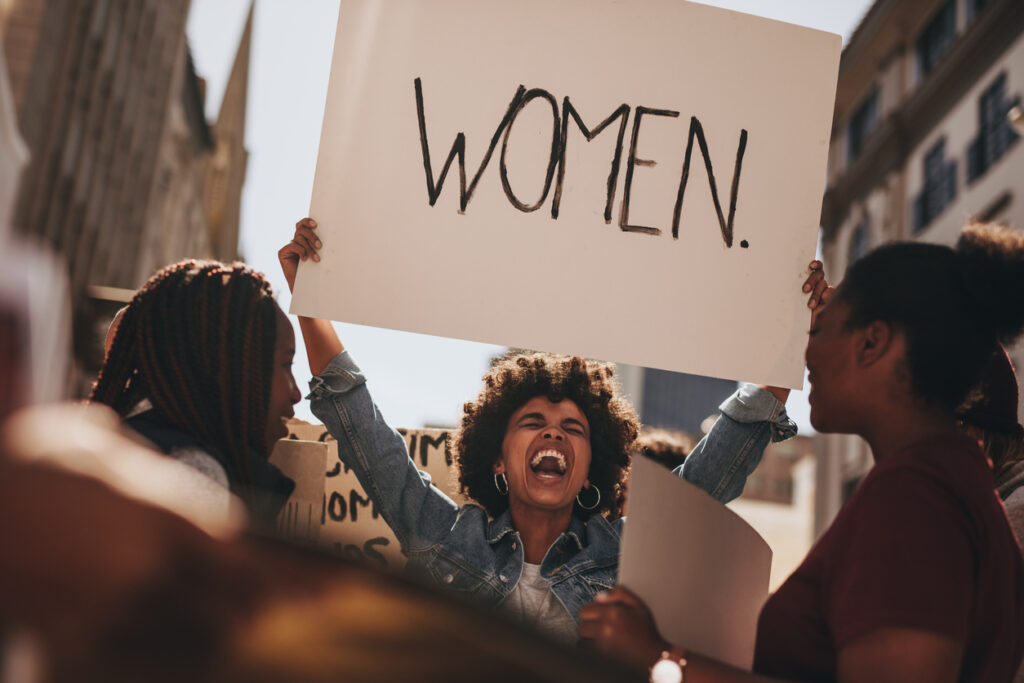This year we enter International Women’s Day with a slightly brighter twinkle in our eyes as the news of women holding nearly 40% of board positions at the UK’s biggest companies spread quickly in February.
The FTSE Women Leaders Review was published in February 2022 and revealed that 414 women held company board roles at FTSE 100 firms in 2021.
It’s a win for the workplace, women and everyone who has ever hoped for more meaningful support systems to improve organisational cultures.
So, while there are still some significant strides to achieve an equality utopia in the workplace – the celebrations for this monumental milestone and wave of change are not premature.
We have broken some biases with this phenomenal improvement, and yet we mustn’t take our foot off the women empowerment peddle just yet.
We still have gaps to fill.
Despite the 39.1% of women in board roles, women were still hugely underrepresented in senior executive positions, meaning we continue to be assigned “lower in power” jobs than men at FTSE 100 and 350 firms.
We also still have the added challenge of raising the career profile of women from groups that continue to be underrepresented at the workplace.
Black women, women from the LGBTQ+ community, women with visible disabilities and other women from protected categories continue to be missing at a board and senior executive level.
So, where do we go from here?
How do we maintain an upward trajectory without leaving some women behind?
“When women leaders like me do not feel the inequality, we tend to forget that something is not working.” – Ida Auken, Member of the Danish Parliament.
It’s clear further steps to increase the number and diversity of women at board, and senior executive level is still vital. Today, more than ever, we are in the best position to take stock of the real-world actions required to strengthen development and retention opportunities for women in the workplace.
Reviewing the impact of our organisational culture on all women at all levels is crucial to identifying existing gaps and creating psychologically safe work environments to support more women with speaking up about their experiences at their workplace.
It is only in these types of organisational cultures where women’s opinions and experiences matter – that women can feel motivated and equipped to move up the career ladder and break through glass ceilings.
More unconscious and conscious bias coaching, training and exercises embedded into organisational culture and development processes and employee programmes will help address inequity in the succession strategy.
Holistic approaches to growth
Psychological safety is also key to genuinely improving, discussing and focusing on women’s health and wellbeing at the workplace.
Currently, 24% of women going through menopause say they are unhappy in their jobs due to a lack of support. 63% of these women also say their workplaces have not introduced initiatives or policies to help them find sustainable ways to balance their health and work life.
While some companies continue to encounter challenges with asking the right questions about women’s health and wellbeing in the workplace, knee-jerk reactions and gestures massively take president.
These sorts of responses can induce feel-good moments. Still, they tend to lack the depth to close the gaps that limit the possibilities of women and their male counterparts finding the solutions that women want and need to be viewed and positioned as leaders.
But we’re armed with the knowledge and awareness (and women) in our workplaces to drive further change.
Providing time to explore women’s holistic wellness honestly and safely at work can introduce more considered policies and support leadership development for women from all walks of life. Women living and working with worries about endometriosis, pregnancy loss, menopause, family planning, childcare challenges, financial wellbeing and other concerns.
Succession and our inclusion goals
Opening the discussion also makes room for workplace processes to be reviewed and updated to reflect current employee experience. Succession planning, in particular, is a vital process that, if studied and modernised to support inclusion, could help organisations introduce more women into leadership positions.
High-performing women, particularly those from underrepresented groups, are often the least likely to be selected for succession, as their leadership styles rarely match those currently in leadership positions.
More unconscious and conscious bias coaching, training and exercises embedded into organisational culture and development processes and employee programmes will help address inequity in the succession strategy.
Focusing on more diverse working styles during succession planning will align with the company’s DEI goals. Coaching, mentorships and development for all women at all levels gives women more room to identify and demonstrate their unique leadership style and how that elevates team performance.
There really is no shortage of innovative, high-performing and committed women
Celebrations of empowerment
Women empowerment, the increased meaningful solidarity between women in the workplace and growing networks of women mentoring women have been the leading factors in this celebration of nearly 40% of women sitting at board level at our top FTSE 100.
There really is no shortage of innovative, high-performing and committed women and broadening the opportunities for these women to succeed into senior positions is how we will continue to see success in this area.
As women, we will naturally desire to pay forward our achievements in the workplace; however, action from everyone at the workplace is essential to see more equity and balance throughout the entire workplace eco-system.
Interested in this topic? Read Women at work: Isn’t it time to close the gender health gap?
[cm_form form_id=’cm_65a14c3f5da64′]






